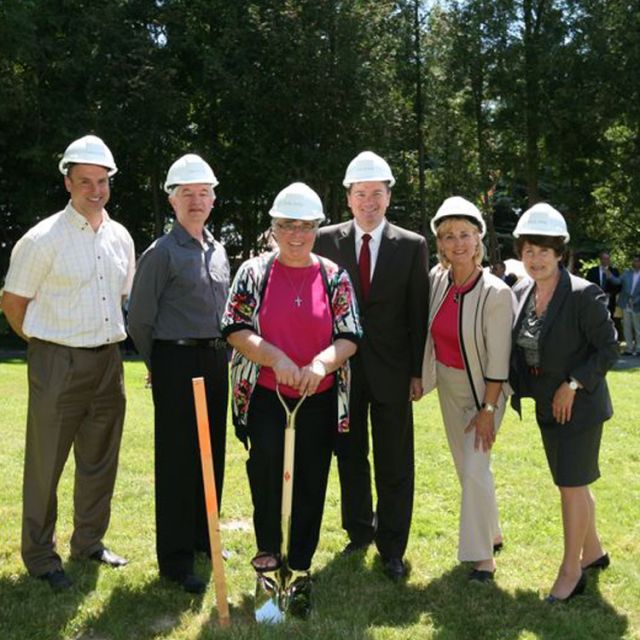“A setting of natural beauty with access to nature facilitates the healing of body, mind and spirit,” Ukeritis told The Catholic Register. “Housing is coming closer and closer and the environment that supports a community like ours is disappearing.”
Not only will Southdown patients and clients be able to take quiet and private walks on the new campus, the new facilities will encourage exercise.
“Research is clear in the link between exercise and depression,” said Ukeritis. “Increasing exercise is related to decrease in depression.”
The goal at Southdown is “healthy ministers for a healthy Church.” But the challenges have changed over more than 45 years Southdown has been operating.
When Southdown opened in 1966 it was narrowly focussed on treating alcoholism along a 12-step, Alcoholics Anonymous model. Back then, many priests found AA not quite anonymous enough.
The institute quickly found the needs went beyond just alcoholism and beyond just priests. In the 1970s Southdown expanded its reach to include religious orders, including the sisters. As time went on bishops and religious superiors began to call on Southdown’s expertise to screen candidates for religious life and seminary training.
While the buildings at Southdown’s old address in Aurora have been well maintained, they now represent something of a challenge, said Ukeritis. There are no elevators. Few of the rooms have a private bath. Group therapy sessions have to be conducted in rooms that are also used for exercise or as lounges.
The new 22-bed facility will be built around a central chapel. It will include separate meditation areas, an art and fitness room and multipurpose areas.
At one point Southdown had space for as many as 44 residents and four short-term visitors in for assessment. In those days patients stayed for four to six months. Modern treatment regimens are much shorter, enabling Southdown to treat greater numbers over the course of a year.
Last year 82 patients went through a residential program of 14 weeks. Southdown also completed 85 clinical and candidate assessments.
The new facility will include four fully accessible bedrooms, non-slip floors and other features to reflect the aging population. The architectural changes go along with staffing changes that have brought on a neuropsychologist to assess people who may have diminished cognitive function, plus a nutritionist to consult on weight management, diabetes, heart conditions and other medical issues related to diet.
A successful outcome from a visit to Southdown isn’t necessarily a return to ministry, said Ukeritis.
“There are individuals for whom Church ministry is not appropriate and persons who are called to serve in other ways,” she said.
Southdown doesn’t have a date for the new facility to open yet.
Ground broken on new Southdown
By Michael Swan, The Catholic RegisterAs the sprawl crawls toward them, the Canadian Church’s first option for helping and healing priests with addictions, depression and other psychological issues is pulling up stakes.
The Southdown Institute has broken ground on a new address at the north end of East Gwillimbury, Ont. Surrounded once again by farm country, the new Southdown facility in Holland Landing will aim to better serve an aging population with up-to-date strategies for dealing with everything from eating disorders to dementia, said Southdown CEO Sr. Miriam Ukeritis of the Congregation of St. Joseph.
Please support The Catholic Register
Unlike many media companies, The Catholic Register has never charged readers for access to the news and information on our website. We want to keep our award-winning journalism as widely available as possible. But we need your help.
For more than 125 years, The Register has been a trusted source of faith-based journalism. By making even a small donation you help ensure our future as an important voice in the Catholic Church. If you support the mission of Catholic journalism, please donate today. Thank you.
DONATE
